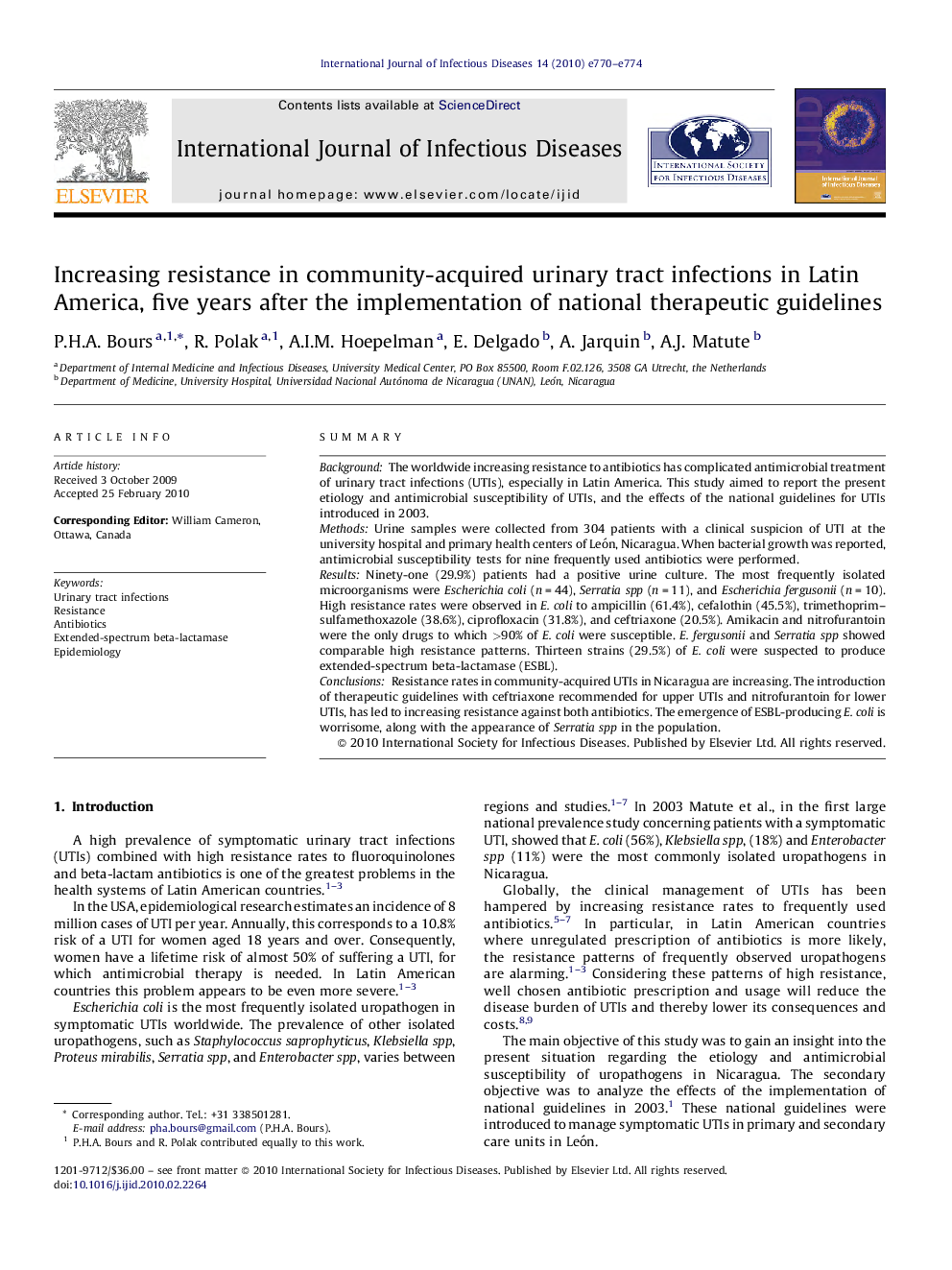| کد مقاله | کد نشریه | سال انتشار | مقاله انگلیسی | نسخه تمام متن |
|---|---|---|---|---|
| 3363961 | 1592120 | 2010 | 5 صفحه PDF | دانلود رایگان |

SummaryBackgroundThe worldwide increasing resistance to antibiotics has complicated antimicrobial treatment of urinary tract infections (UTIs), especially in Latin America. This study aimed to report the present etiology and antimicrobial susceptibility of UTIs, and the effects of the national guidelines for UTIs introduced in 2003.MethodsUrine samples were collected from 304 patients with a clinical suspicion of UTI at the university hospital and primary health centers of León, Nicaragua. When bacterial growth was reported, antimicrobial susceptibility tests for nine frequently used antibiotics were performed.ResultsNinety-one (29.9%) patients had a positive urine culture. The most frequently isolated microorganisms were Escherichia coli (n = 44), Serratiaspp (n = 11), and Escherichia fergusonii (n = 10). High resistance rates were observed in E. coli to ampicillin (61.4%), cefalothin (45.5%), trimethoprim–sulfamethoxazole (38.6%), ciprofloxacin (31.8%), and ceftriaxone (20.5%). Amikacin and nitrofurantoin were the only drugs to which >90% of E. coli were susceptible. E. fergusonii and Serratiaspp showed comparable high resistance patterns. Thirteen strains (29.5%) of E. coli were suspected to produce extended-spectrum beta-lactamase (ESBL).ConclusionsResistance rates in community-acquired UTIs in Nicaragua are increasing. The introduction of therapeutic guidelines with ceftriaxone recommended for upper UTIs and nitrofurantoin for lower UTIs, has led to increasing resistance against both antibiotics. The emergence of ESBL-producing E. coli is worrisome, along with the appearance of Serratiaspp in the population.
Journal: International Journal of Infectious Diseases - Volume 14, Issue 9, September 2010, Pages e770–e774